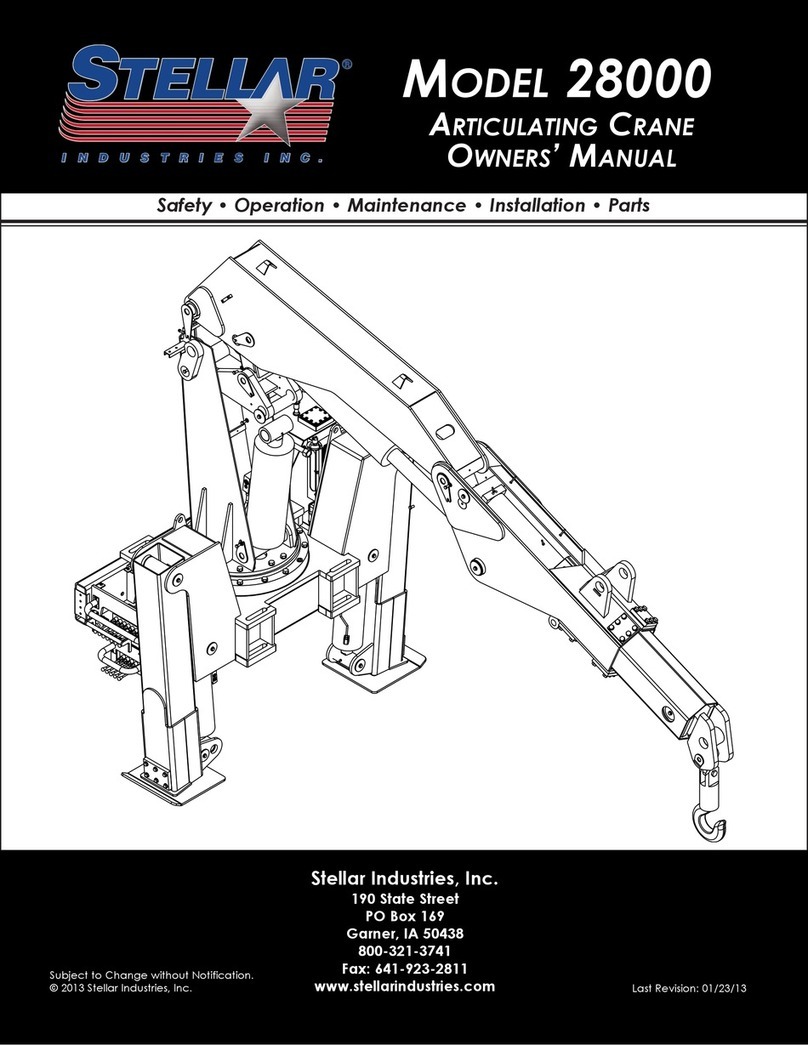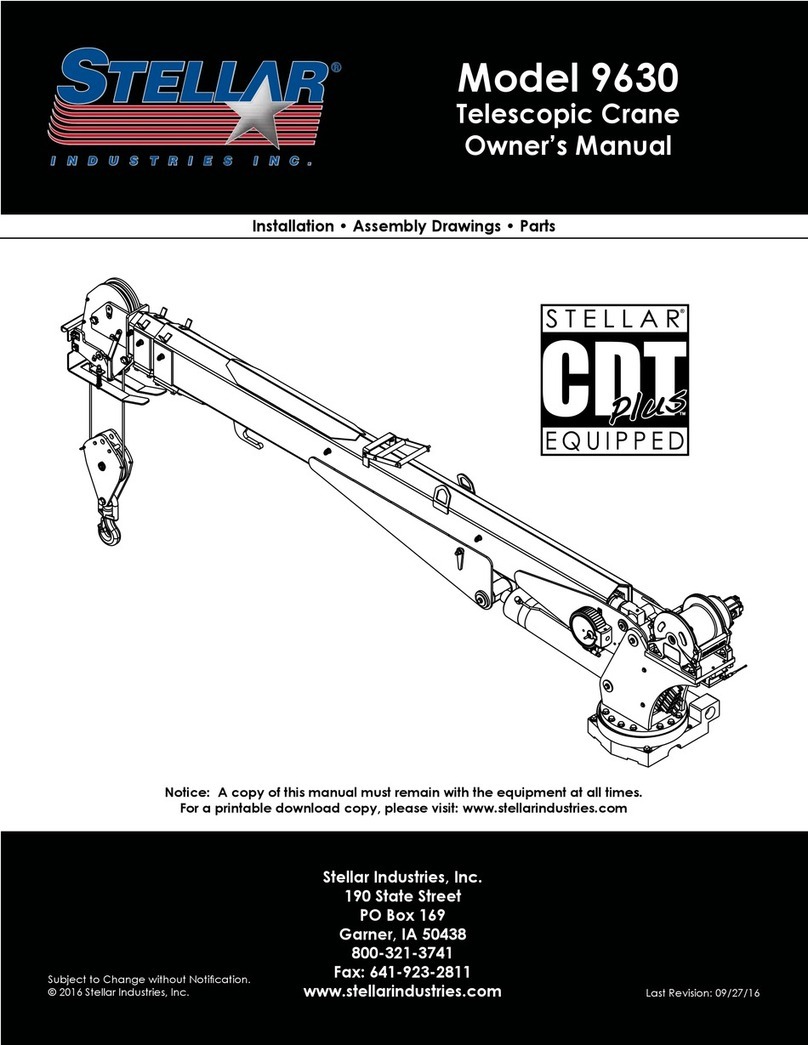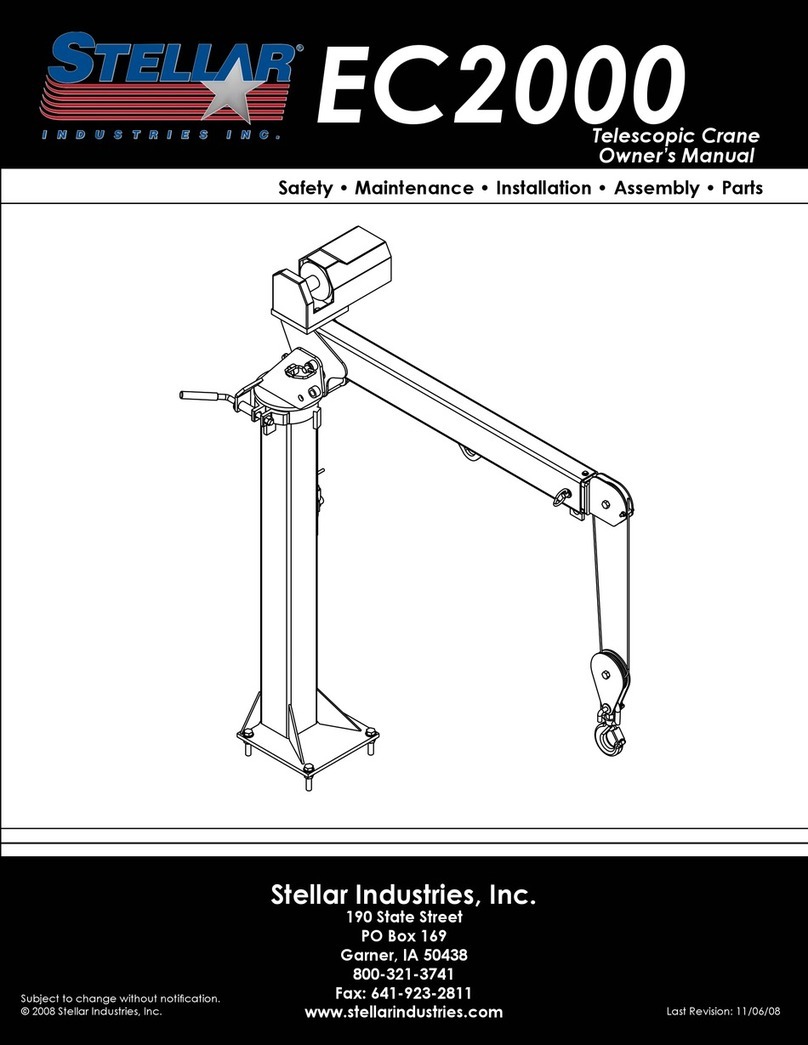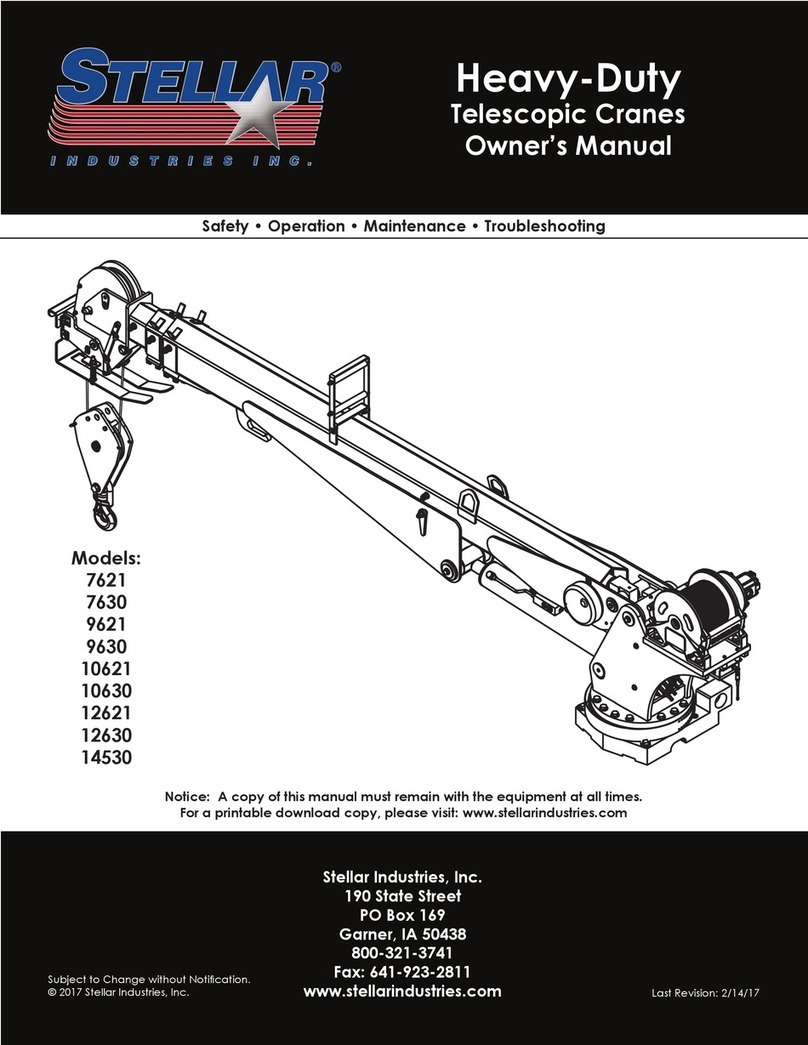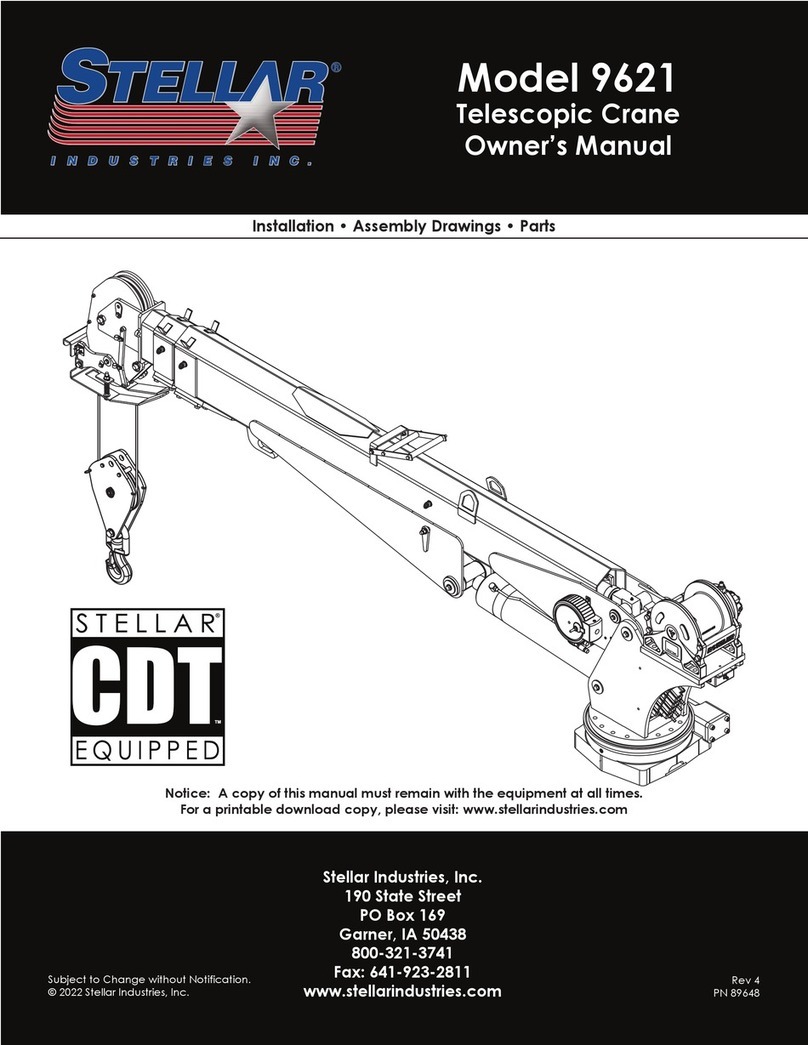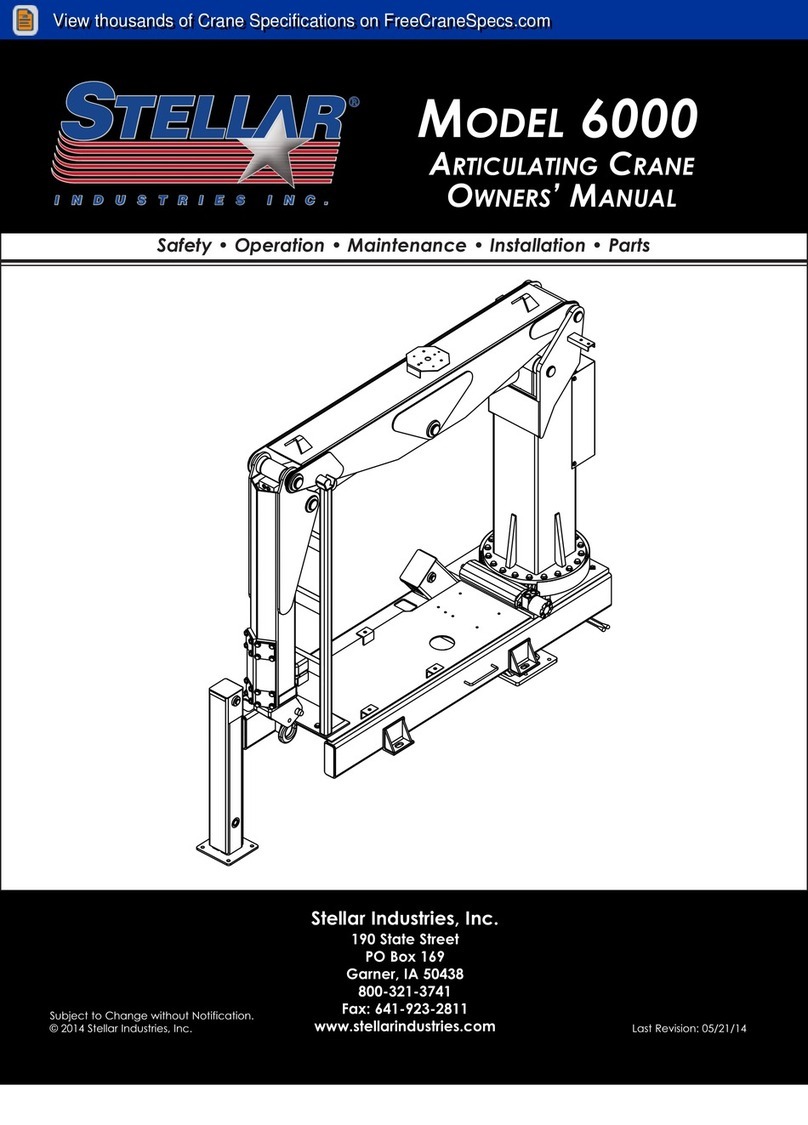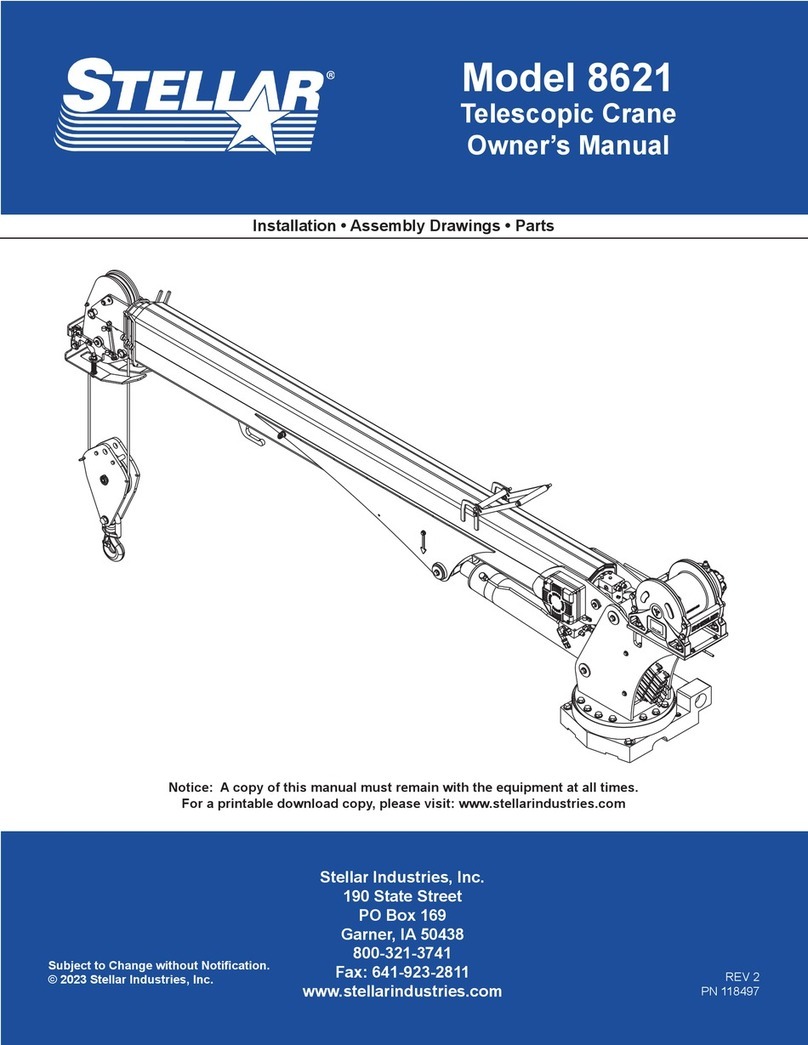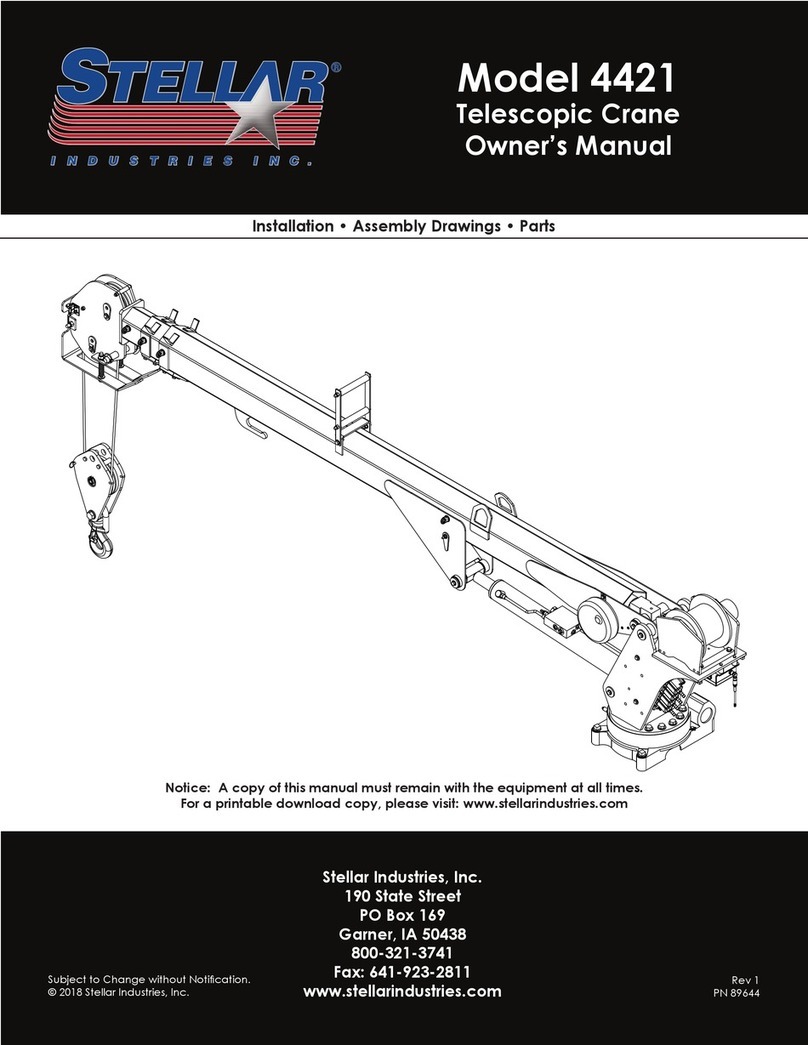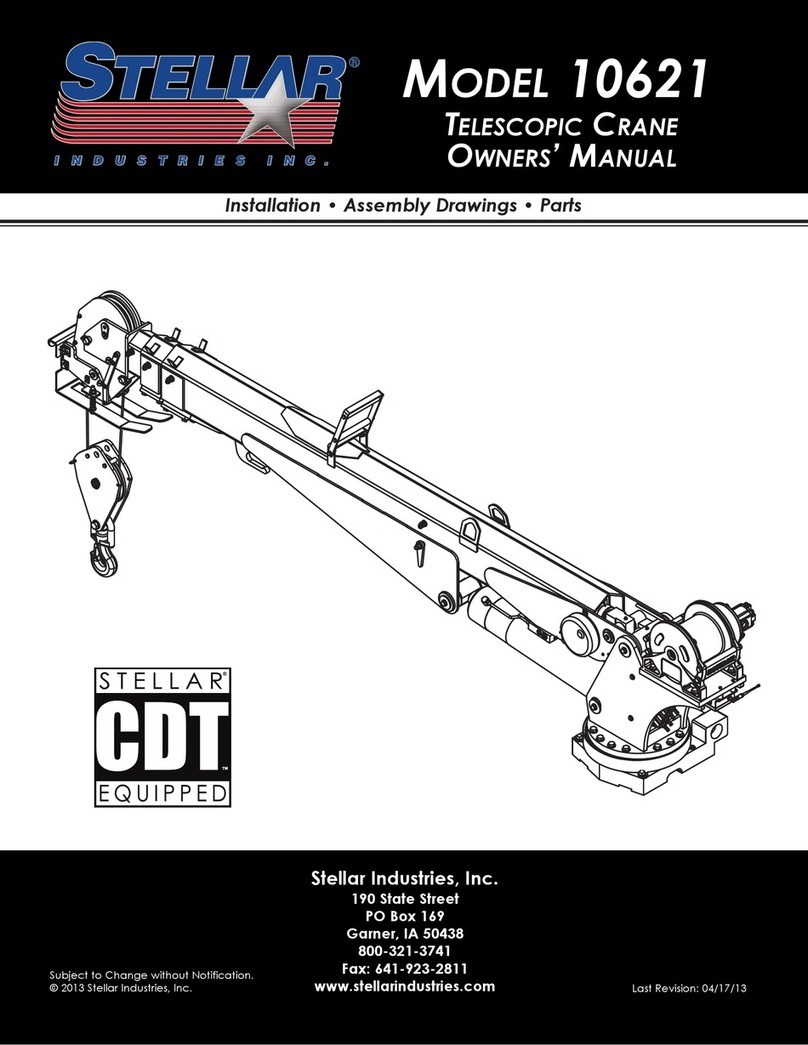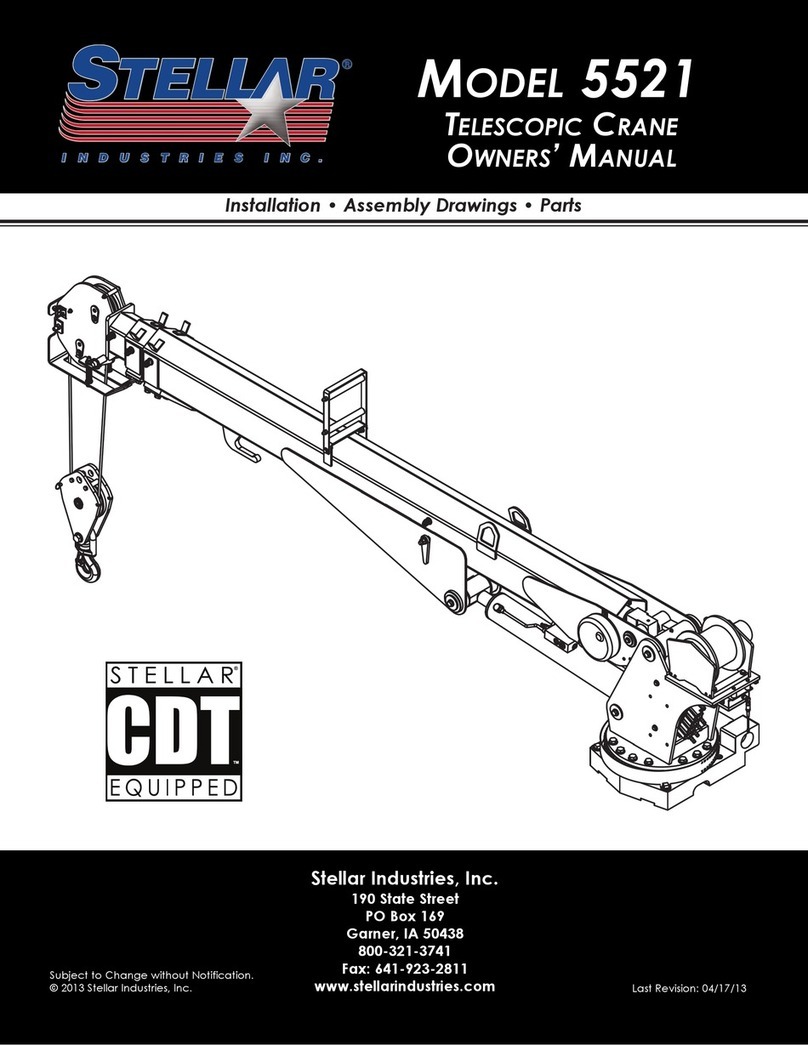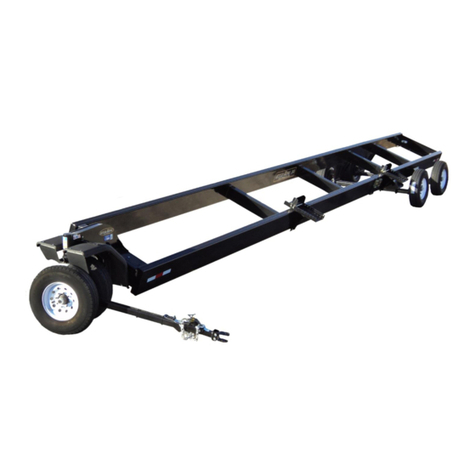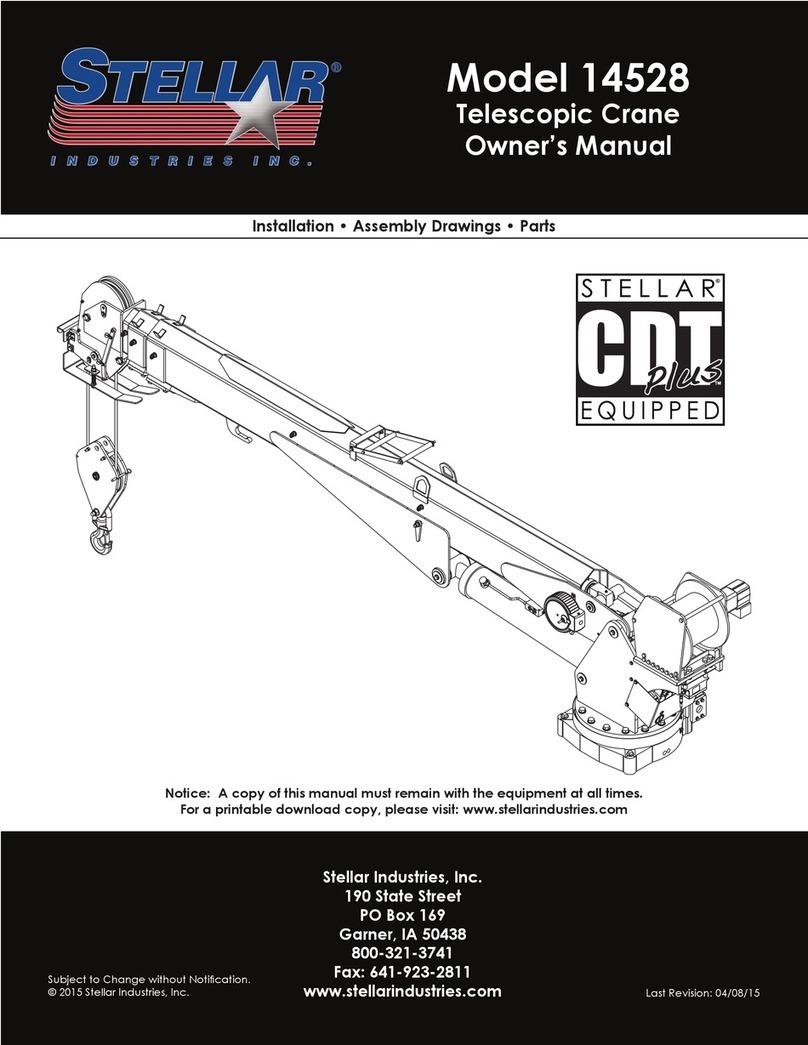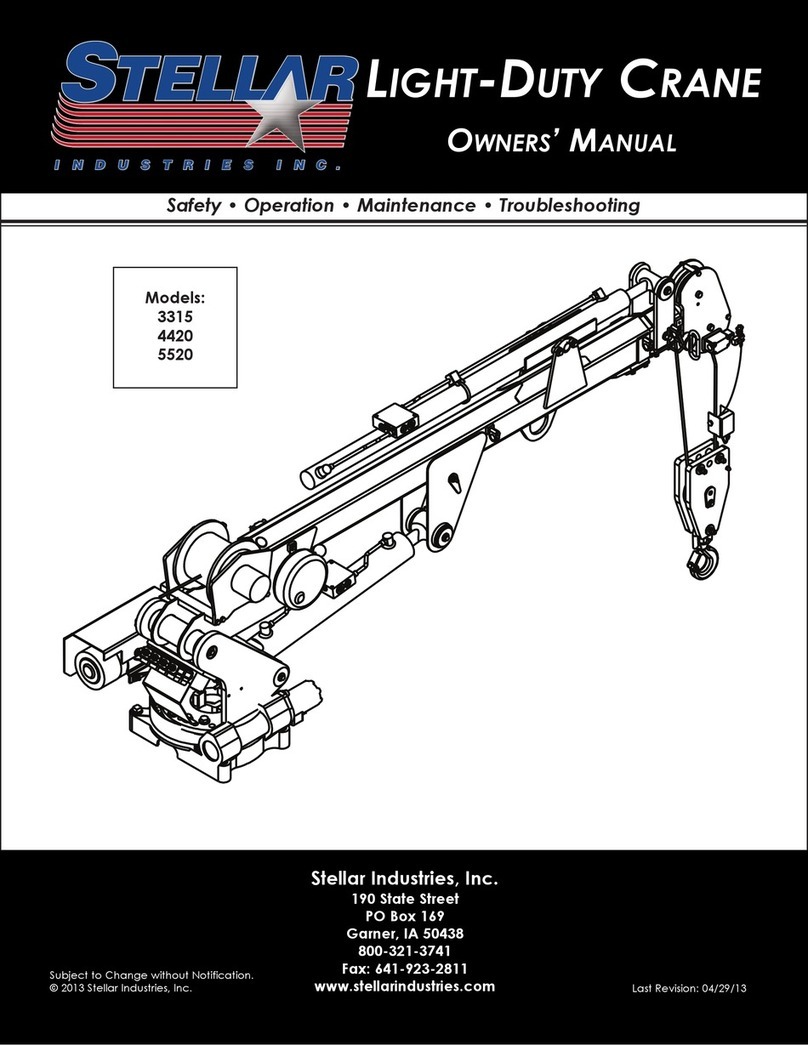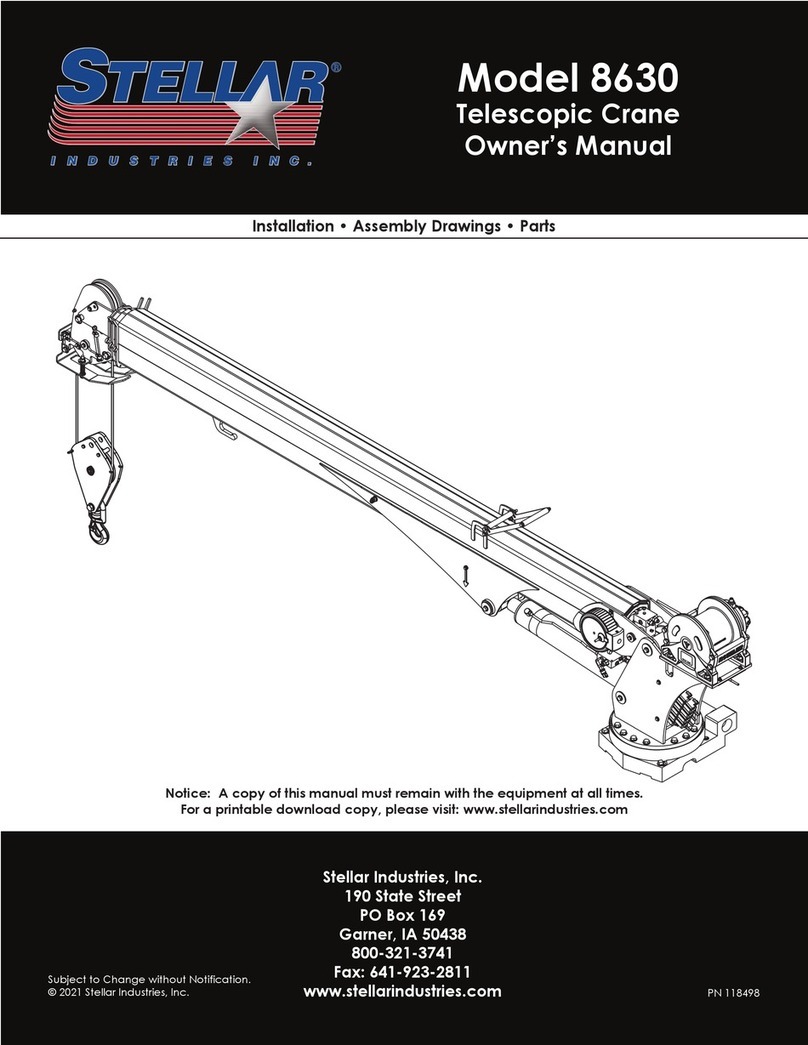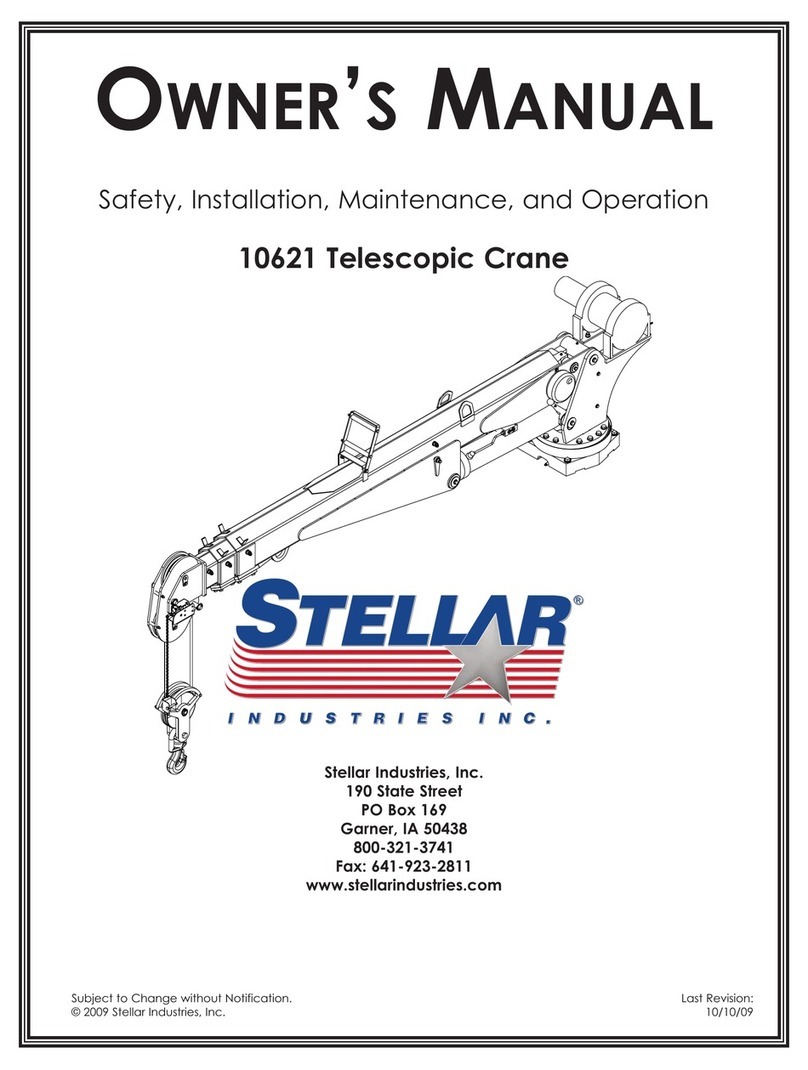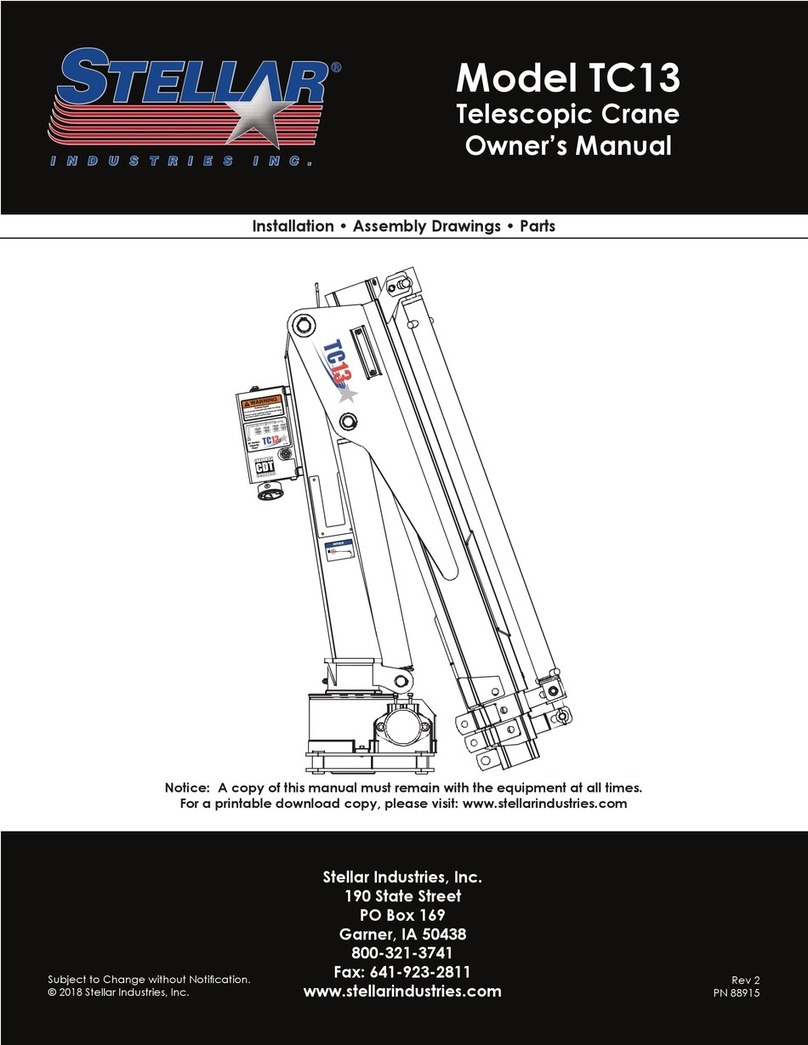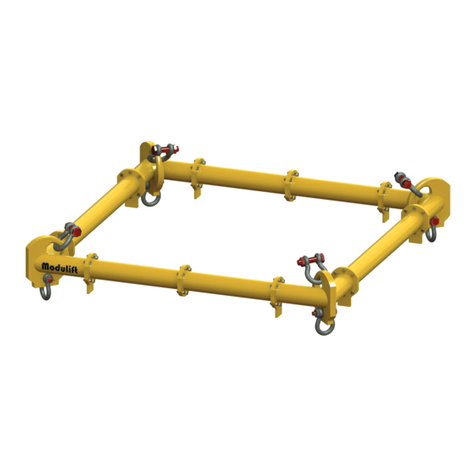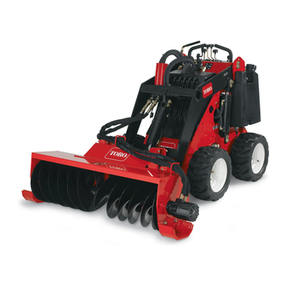
regulations and accident-prevention equipment.
Do not wear rings, wristwatch, jewelry, loose-
fitting or hanging clothing such as ties, torn
garments, scarves, unbuttoned jackets or
unzipped overalls, which could get caught up in
the moving parts of the crane.
Keep a first-aid box and a fire extinguisher
readily available on the truck. Regularly check to
make sure the fire extinguisher is fully charged
and the first-aid kit is stocked.
Do not use controls and hoses as handholds.
These parts move and cannot provide stable
support.
Never allow anyone to ride the crane hook or
load.
MAINTENANCE SAFETY
Never modify or alter any of the equipment,
whether mechanical, electrical, or hydraulic,
without Stellar Industries’ approval.
Do not perform any maintenance or repair work
on the crane unless authorized and trained to do
so.
Release system pressure before attempting to
make adjustments or repairs.
Do not attempt service or repair when PTO is
engaged.
Failure to correctly plmb and wire the crane can
cause a malfunction and damage to the crane
and/or operator.
Decals are considered safety equipment. They
must be maintained, as would other safety
devices. Do not remove any decals. Replace
any decals that are missing, damaged, or not
legible.
Chapter 1 - Safety
1-1
Chapter 1 - Safety
GENERAL
It is the responsibility of the owner to instruct the
operator in the safe operation of your equipment
and to provide the operator with properly
maintained equipment.
Trainees or untrained persons shall be under the
direct supervision of qualified persons.
Do not operate equipment under the adverse
influence of alcohol, drugs, or medication.
PERSONAL SAFETY
Keep clear of all moving parts.
Always wear the prescribed personal safety
devices.
Always wear approved accident-prevention
clothing such as: protective helmets, anti-slip
shoes with steel toes, protective gloves, anti-
noise headphones, protective glasses, and
reflective jackets with breathing apparatus.
Consult your employer regarding current safety
Please Read the Following Carefully! This
portion of the manual contains information
regarding all Stellar manufactured cranes.
Some items contained within this chapter may
not apply to your specific equipment.
Safety should be the number one thought on
every Stellar crane operator’s mind. Three
factors should exist for safe operation: a
qualified operator, well-maintained equipment,
and the proper use of this equipment. The
following information should be read and
understood completely by everyone working
with or near the crane before beginning.
Stellar Industries, Inc. is not liable for accidents
occurred during the usage of the crane caused
by non-fulfillment from the operator’s side of
current rules, laws, and regulations.


